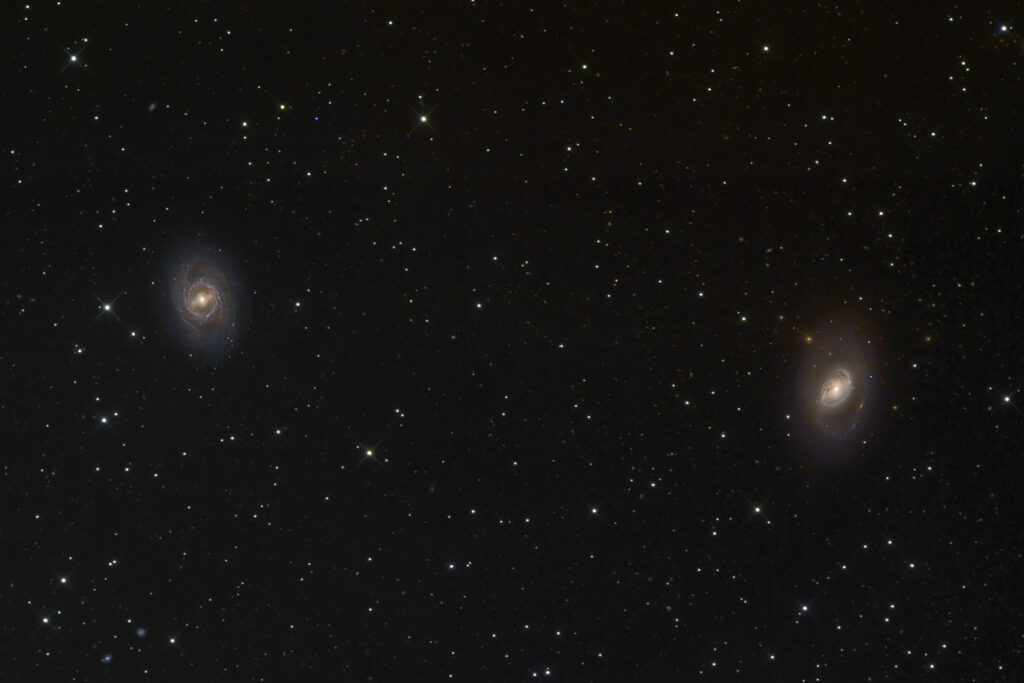Messier 95 & Messier 96
Barred-Spiral (SBb) & Spiral (Sa) Galaxies, Leo
- Description
- Technical
- Links
Messier 95, also known as M95 or NGC 3351, is a barred spiral galaxy about 33 million light-years away in the zodiac constellation Leo. It was discovered by Pierre Méchain in 1781, and catalogued by compatriot Charles Messier four days later. In 2012 its most recent supernova was discovered.
The galaxy has a morphological classification of SB(r)b, with the SBb notation indicating it is a barred spiral with arms that are intermediate on the scale from tightly to loosely wound, and an “(r)” meaning an inner ring surrounds the bar. The latter is a ring-shaped, circumnuclear star-forming region with a diameter of approximately 2,000 light-years (610 pc). The spiral structure extends outward from the ring.
Its ring structure is about 3.5×108 M☉ (solar masses) in molecular gas and yields a star formation rate of 0.38 M☉ yr−1. The star formation is occurring in at least five regions with diameters between 100 and 150 pc that are composed of several star clusters ranging in size from 1.7 to 4.9 pc. These individual clusters contain (1.8–8.7)×106 M☉ of stars, and may be on the path to forming globular clusters.
A Type II supernova, designated as SN 2012aw, was discovered within in 2012. The light curve of this displayed great flattening after 27 days, thus classifying it as a Type II-P, or “plateau”, core-collapse supernova. The disappearance of the progenitor star was later confirmed from near-infrared imaging of the region. The brightness from the presumed red supergiant progenitor allowed its mass to be estimated as 12.5±1.5 M☉.
M95 is one of several galaxies within the M96 Group, a group of galaxies in the constellation Leo, the other Messier objects of which are M96 and M105. Messier 96 (also known as M96 or NGC 3368) is an intermediate spiral galaxy about 31 million light-years away.
Telescope: ASA N16 f3.6
Mount: Astro Physics 3600GTO “El Capitan”
Camera: SBIG STL-11000M
Guider: SBIG STL-Internal
L: 24×5 mins = 120 mins, R: 12×5 mins = 60 mins, G: 14×5 mins = 70 mins, B: 15×5 mins = 75 mins
Total Imaging Time: 5h 25m
Data Imaged remotely over 3 nights during February 2010.
Data acquisition & Processing by David Churchill.
None

